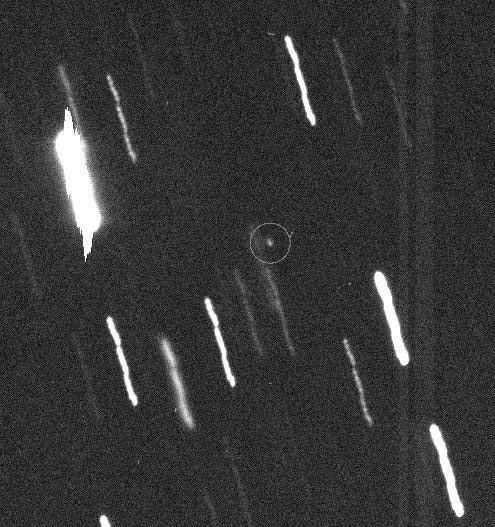'Potentially Hazardous' 340-Meter Asteroid Will Come Closer To Earth Than Moon, Satellites
KEY POINTS
- Asteroid 99942 Apophis will be less than 20,000 miles away from the Earth's surface when it passes by the planet in 2029
- It was predicted that the asteroid could hit the Earth until recent observations ruled this out for the next 100 years
- Astronomers are now hoping to learn more about Apophis' shape, rotation and spin rate
A "Potentially Hazardous Asteroid" (PHA) that will pass by the Earth in about seven years will be closer to the planet than the moon and some satellites, according to NASA.
Asteroid 99942 Apophis will be less than 20,000 miles away from the Earth's surface when it passes by the planet on April 13, 2029, NASA said in a statement.
The 1,100-feet-wide asteroid, which was first discovered in 2004, will be closer to the Earth than the planet's own geosynchronous satellites at that moment, according to the space agency.
Geostationary satellites hover around 22,200 miles above the Earth, while the moon is located 238,855 miles away from the planet.
Observers on the ground in the eastern hemisphere will be able to spot Apophis without the aid of a telescope or binoculars during its approach in 2029, NASA said.
Apophis gained notoriety in the past after astronomers predicted it would come "uncomfortably close" to the Earth in 2029, according to the agency.
It was identified as one of the most hazardous asteroids that could impact Earth after its discovery, but additional observations later ruled out a risk of impact by 2029.
A "small chance" of impact in 2068 still remained until recent observations made on Apophis' flyby on March 5, 2021, enabled astronomers to determine that the asteroid would not strike Earth in this century.
"A 2068 impact is not in the realm of possibility anymore, and our calculations don’t show any impact risk for at least the next 100 years," said Davide Farnocchia, of NASA's Center for Near-Earth Object Studies (CNEOS).
Astronomers now hope to learn more about Apophis' shape, which was previously believed to have a "bilobed," or peanut-like, appearance, according to NASA.
They are also working to develop a better understanding of the asteroid's rotation rate and its spin state, the agency said.
The knowledge will enable astronomers to determine the orientation Apophis will have with Earth as it encounters the planet's gravitation field in 2029, which could change the asteroid's spin state and cause "asteroid quakes."
"When I started working with asteroids after college, Apophis was the poster child for hazardous asteroids. There’s a certain sense of satisfaction to see it removed from the risk list, and we’re looking forward to the science we might uncover during its close approach in 2029," Farnocchia said.
PHAs are "defined based on parameters that measure the asteroid's potential to make threatening close approaches to the Earth," CNEOS explained.

© Copyright IBTimes 2024. All rights reserved.





















